Dubai is a vast city, and despite some new green and pedestrian areas, it is impossible to get around on foot. If you have read my guide to Dubai’s districts, you already know how essential taxis are. Still, you can also use other public transport in your travels.
Table of Contents
Private transport in Dubai: taxis and car rental with driver
The main way to get around Dubai is by taxi or car rental with a driver, even for short distances. Unlike other cities, where tourists tend to be cheated by longer routes than necessary, this risk is minimal in Dubai.
PLAN YOUR TRIP TO DUBAI
Save money with the Dubai Go City Explorer Pass and enjoy free access to the city’s top attractions such as the sightseeing bus tour, dhow cruise, Aquaventure water park, desert safari, and Burj Khalifa.
The best way to stay connected in the UAE is with a Holafly eSim, which offers unlimited data and fast, reliable internet, ideal for navigating, sharing photos, and staying in touch.
About travel insurance, Heymondo provides excellent value for money and offers comprehensive coverage against unexpected events like medical emergencies, trip cancellations, lost luggage, and more.
Taxis, limousines and rental cars are virtually everywhere in Dubai. You can also book them through the DTC App, integrated with the Dubai Taxi Corporation’s Control Centre and Booking Centre. Once you register and select the type of car you want, the app searches for the nearest vehicle and automatically sends it to your location. You can then pay the driver directly or by credit card using the app.
Taxi
The best way to get around Dubai is undoubtedly by taxi. You will find them everywhere, in front of hotels and more touristy places. They cost little and are the best way to cover long distances quickly in the city. To give you an idea of the cost, I have rarely spent more than €10 to get from Bur Dubai to the various tourist attractions.
I have never seen illegal taxis in Dubai, but you can recognise the official taxis by their cream-coloured bodywork. They are clean and air-conditioned, and the drivers, generally Indian or Pakistani, speak English.
Women and families of all nationalities can also use dedicated taxis, recognisable by the pink roof of the vehicle, driven exclusively by female drivers. However, I did not see many of them around, and the expats we spoke to confirmed that they are a minority. You can book them through the call centre or the DTC (Dubai Taxi Corporation) app.
The only negative report is that paying for taxis with ATMs or credit cards does not always work well. I suggest you always carry some dirhams, the UAE currency, to use in these cases and avoid unpleasant round-ups to foreign currency payments or expensive last-minute withdrawals.
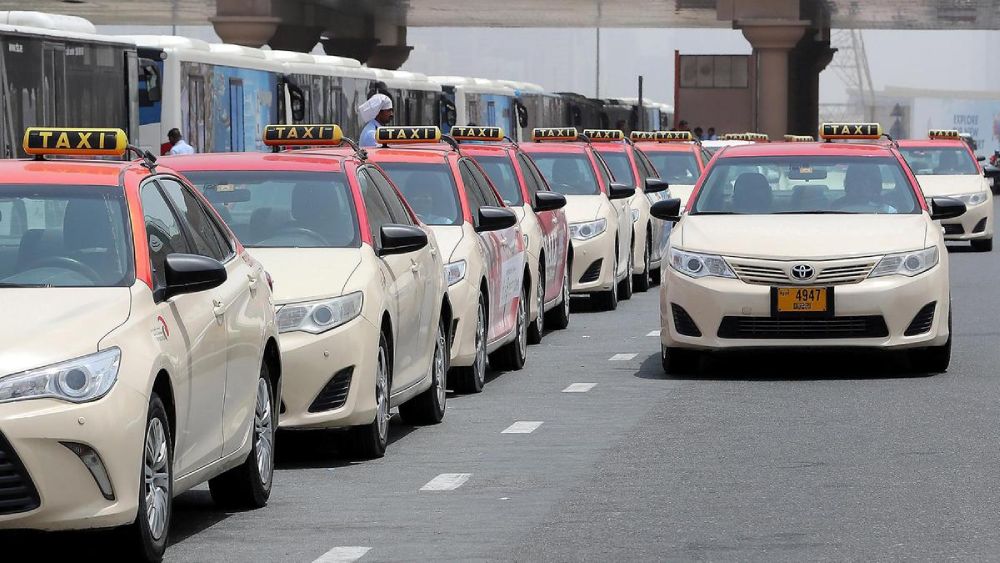
Cars with driver
Unlike cream-coloured taxis, black taxis do not have a meter. You often find them at taxi stands in shopping centres or in front of tourist attractions. They are legitimate taxis in very comfortable luxury cars. However, the price of a ride is almost twice as much as that of taxis with meters.
The black taxis are not part of the Dubai Taxi Corporation, which operates cream-coloured taxis. They are more chauffeur-driven hires, always available in front of tourist attractions and shopping centres. The same drivers take care of private transfers from the airport.
Limousines with driver
Dubai’s taxi service also allows you to book a luxury chauffeur-driven limousine, either traditional or exclusively for female customers. In this case, you can find limousines for women searching for the Ameera Limousine service, and you can book both from the DTC App.
The feature of limousines for women is that women drive them. The standard Dubai limousine service offers luxury vehicles such as Tesla, Lexus, or Infiniti. It is an excellent way to treat yourself to a Tesla!
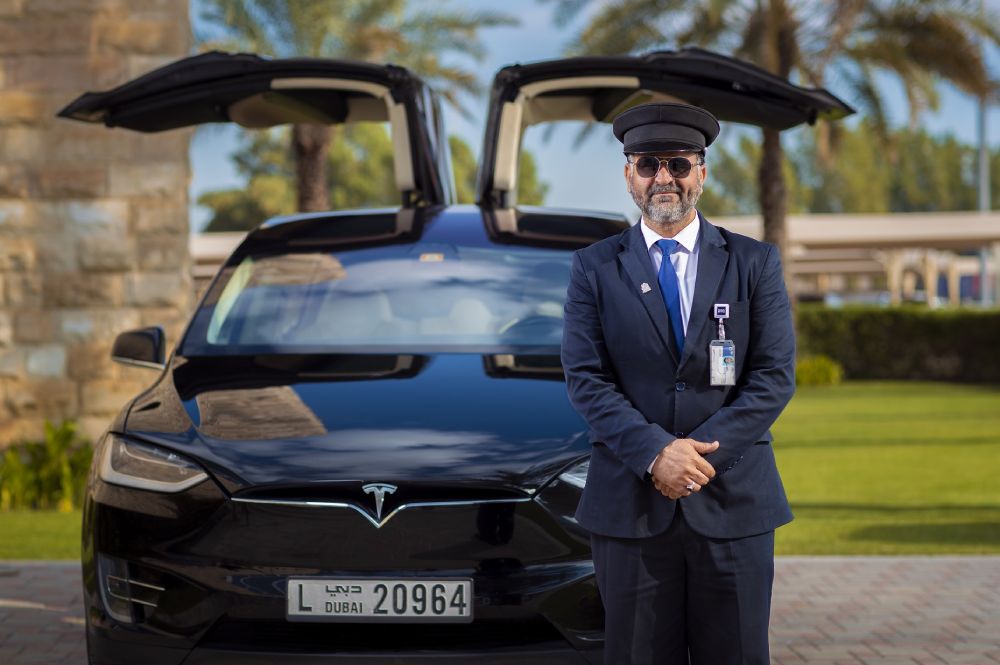
Dubai’s public transport
Although Dubai remains a predominantly car-based city, the public transport network has been dramatically developed since my first visit. It includes buses, trams, water taxis, and the metro. If you decide to explore Dubai by public transport, consider that the ticket cost varies depending on the number of areas you pass through.
Dubai’s public transport tickets are very cheap. A single-zone trip costs around 80 euro cents, and a multi-zone trip costs a maximum of €3.50.
Dubai has seven zones where you can board the metro, bus, tram, and water taxi stops. One integrated ticket is valid for several modes of transport in different zones if you change modes within 30 minutes. At the end of the journey, you are charged for the number of zones you have travelled to.
The Dubai Metro, for example, is connected to the tram system at the DAMAC stop, formerly Dubai Marina, and the Jumeirah Lakes Towers stop, both on the Red Line.
To travel on public transport, you need to purchase the Nol card, which is available in different types: Gold Card for first-class travel, Silver Card, and Personal Card for residents and students or disabled tourists. Alternatively, you can also choose a Red Ticket, which is valid for a limited time of a maximum of ten journeys.
Metro
The Dubai Metro the pride of emirates public transport. It consists of three lines – Red, Green and Branch Line – and is the longest driverless metro line in the world, with a total length of 74 kilometres. The Red Line runs parallel to the coast, stopping near the beaches of Jumeirah, the Burj Khalifa, and the Mall of the Emirates. Then, it goes to the airport, with a new stop to reach the Expo. The Green Line, on the other hand, connects the main points of interest in the historic part of Dubai, Deira and Bur Dubai.
You will not be surprised to learn that the Dubai metro line is considered one of the world’s most advanced and modern railway systems. Like everything in Dubai, it offers a luxurious service with various types of carriages. Only in Dubai can you find a metro with first-class carriages, leather seats and panoramic views exclusive to Gold Class ticket holders.
In addition, the Dubai metro lines have dedicated carriages for women and children. However, I still need to decide whether I like this feature or find it discriminating. Riding on a clean and safe metro with working Wi-Fi, mobile phone coverage, an integrated system, and a limousine taxi ready and waiting for me at the exit is inspiring!
Architecturally, the Dubai metro also has the same futuristic look as the rest of the city. Trains run overhead instead of underground and enter shell-shaped stations to remind commuters of the Emirate’s pearl-fishing tradition.
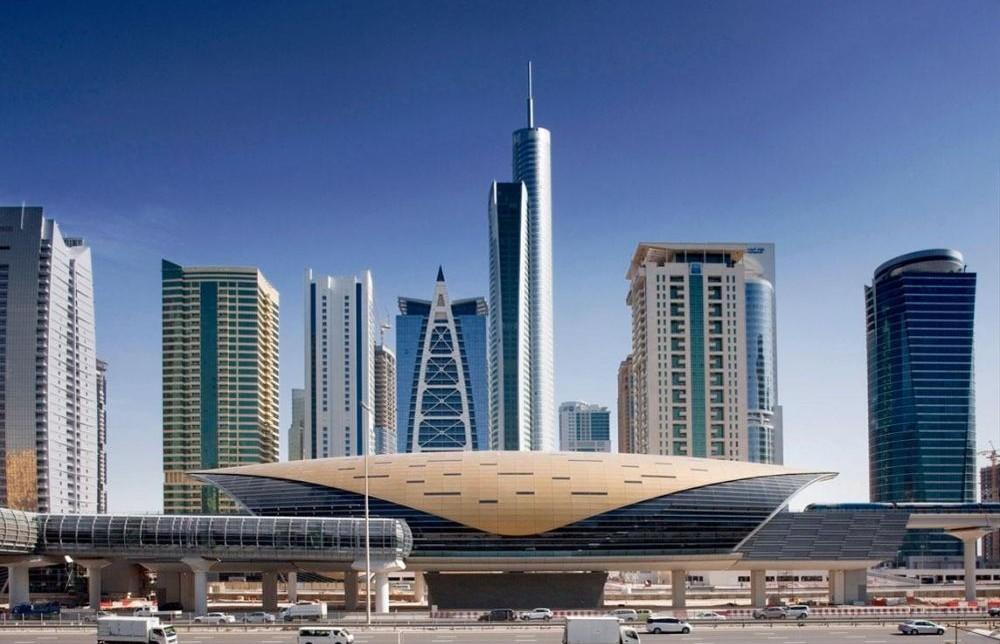
Trams
In Dubai, trams, like the metro, are also operated as a premium service. The fully automated tram service is integrated with the public transport network. It connects the Dubai Metro with the Palm Jumeirah Monorail.
Dubai’s tram network also enjoys a few records, just like the rest of the city. It is the first tram line outside Europe powered by a ground-based power supply system without the overhead wire. It is also the first tram line in the world to use the Platform Screen Doors system in the passenger stations, a mechanism for opening and closing the station doors synchronised with the tram doors.
In line with the entire public transport system in Dubai, there is fully functional Wi-Fi inside the carriages. In addition, even the tram has first-class carriages with leather seats and panoramic views. At the same time, women and children can enjoy their dedicated carriages.
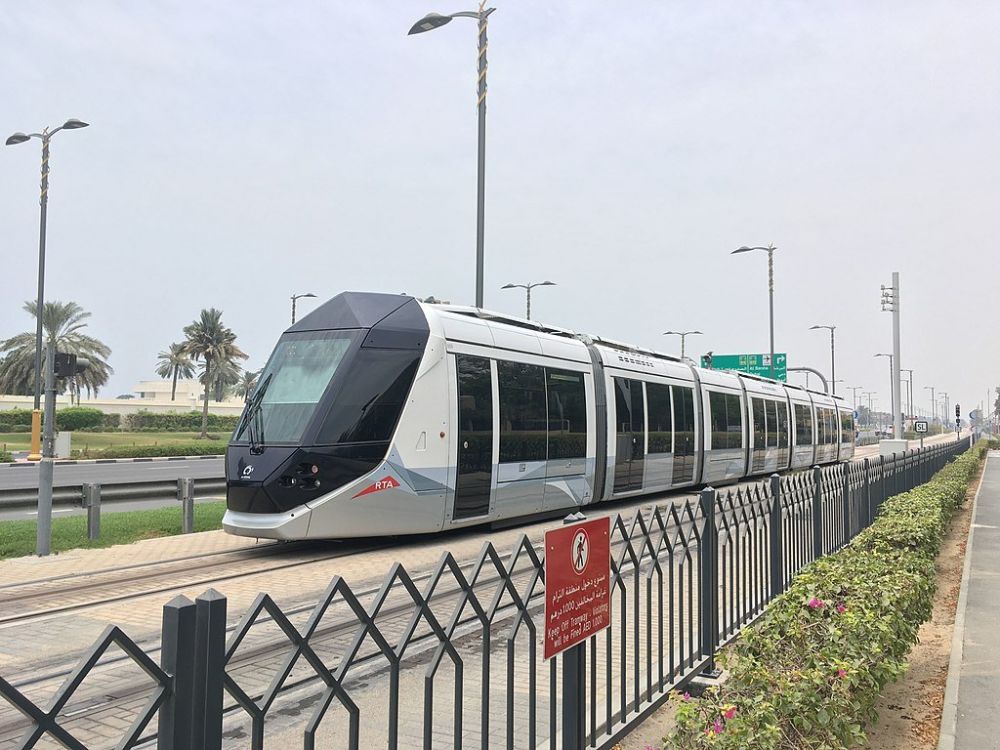
Buses
At the time of writing, the Dubai Public Transport Agency operates a fleet of 1,518 double-decker, standard, or articulated buses on 119 domestic, urban, and intercity routes to other emirates. The bus network covers almost all urban areas of Dubai and is used by some 369,248 passengers every day. There are also separate spaces on the buses for women, children, and families.
The unique feature of Dubai’s bus service is the air-conditioned bus stops. Although this may seem like one of Dubai’s many luxuries, air-conditioned waiting rooms are necessary to wait for the bus in Dubai’s high summer temperatures.

The monorail in Palm Jumeirah
More than public transport, The Palm Monorail is a sightseeing attraction on Dubai’s most iconic island. Each stop corresponds to a point of interest on this artificial island. Its elevated structure allows you to admire its unique architecture.
I suggest you buy your day pass directly at the station and explore the island on your own, passing by Al Ittihad Park, home to more than 100 types of trees and plants native to the United Arab Emirates, to Palm Jumeirah’s public beach, Palm West Beach.
Following the stops on the Palm Monorail, you can also go shopping at Nakheel Mall, stop to eat at the exclusive restaurants of Club Vista Mare or The Pointe, or even see Palm Jumeirah from above, from The View. Finally, take the Palm Monorail to the eccentric Atlantis The Palm hotel, with the Lost Chambers Aquarium and the Atlantis Aquaventure Water Park.
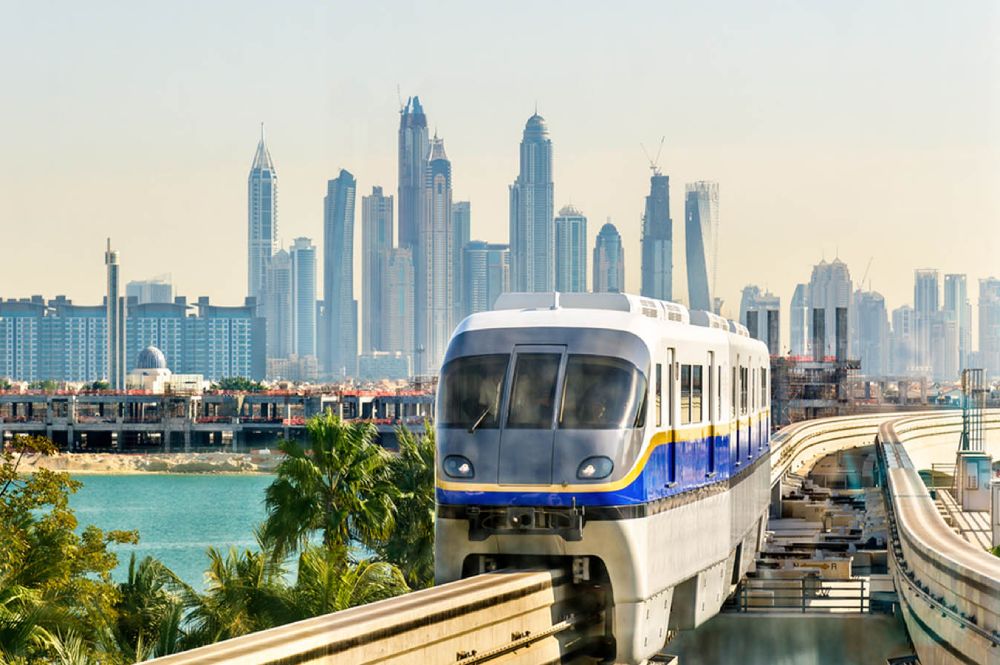
Where to stay in Dubai
Often considered a luxury destination, Dubai offers hotels and flats for all budgets and is much cheaper than you think. Below are a few value-for-money establishments that have been tried out by me personally or by friends and fellow bloggers.
For a luxury family holiday, the Bluewaters Beach Hotel, with swimming pools, restaurants to suit all tastes and children’s areas, is a great choice. To spend less but still stay in top-notch facilities, the Hilton Dubai Al Habtoor City or the V Hotel Dubai are great choices, both overlooking the Dubai Water Canal with numerous in-house restaurants to choose from.
Finally, to see Dubai from a different perspective, I suggest you stay at the Al Seef Heritage Hotel Dubai, a unique property built in traditional Arabian style and located a short distance from the historic district and Al Fahidi Fort.
With this article, I hope I have given you some ideas for getting around Dubai by taxi and public transport. Please share in the comments sectionsited the city and if there is any means of transport you would definitely like to try.
